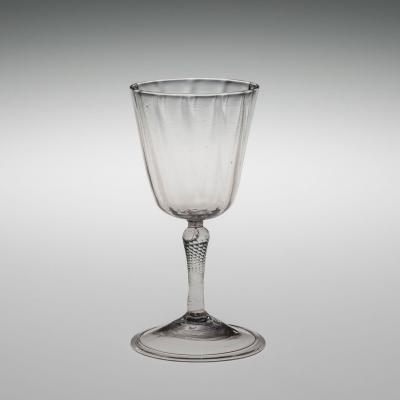Venetian-style glassworking came to Provence in 1443. During the 16th century, glasshouses were established in a number of cities, including Paris, Rouen, Nantes, and Nevers. It is believed that most of the immigrant glassblowers at that time came from Altare rather than from Venice/Murano.39
Nine Venetian-Style Glassworking Centers
France
Wineglass
While using the basic Venetian method for glassblowing, particularly creative workers (presumably foreign ones who were trained by Venetians) occasionally invented clever new constructions and techniques. The stem construction of this goblet is an excellent example. Its manufacturing process is essentially similar to that used to create the hollow merese/avolio structure at the bottom of the cup of the Winged Glass.
Pulled-Stem Wineglass
A group of glasses made in France and the Low Countries during the 17th and 18th centuries established a new way of creating a stemmed wineglass. Today, it is known among glassblowers as a “pulled-stem glass,” and this technique and its many variations became ubiquitous because the work could be completed quickly and relatively easily. Moreover, the initial stages of the process could be facilitated by the use of a mold, which ensured consistency in shape and size. While most of the specialized techniques shown in this publication disappeared over time, this procedure is still performed thousands of times a day in glass factories such as Baccarat (Fig. 26) and Riedel.40

Two Dom Pérignon champagne flutes made by the French glass manufacturer Baccarat. H. 23.4 cm, capacity 5.1 oz. Photo: Courtesy of Baccarat.

